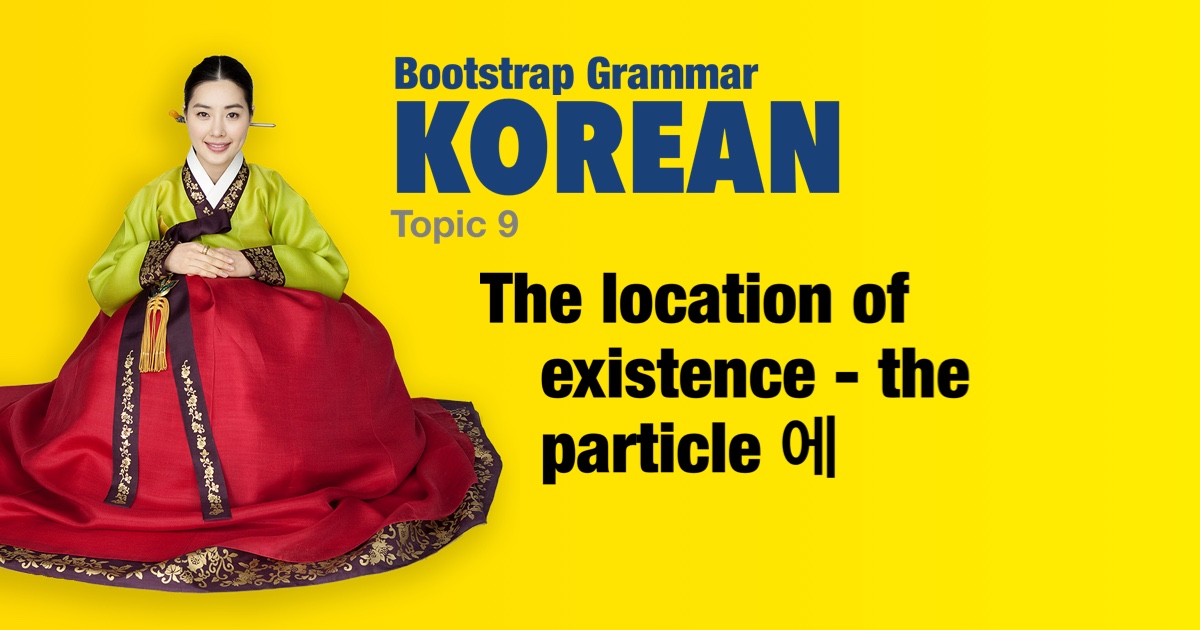Korean grammar - The location of existence - the particle 에 |
|||
|
|||
Pattern: Noun + 에 When specifying the location of existence (있다) or absence (없다) we attach the locative particle 에 to the location/place noun. -- This particle is analogous to 'at', 'in' or 'on'. As we will see later, this particle also means 'to' when used with verbs of motion. In Korean when talking about position or location, we do not use the verb 'to be' (이다) or 'to not be' (아니다) but rather then verbs 'to exist' (있다) or 'to not exist' (없다). -- So in Korean a thing 'exists' or 'does not exist' at a location rather than 'is' or 'is not' at a location. |
| Examples: | |
|
그 언덕에 나무가 있어요.
There is a tree on that hill.
|
|
|
이 교실에 책상이 있어요.
There is a desk in this classroom.
|
|
|
공원에 분수가 있어요.
There is a fountain in the park.
|
|
|
슈퍼마켓에 감자가 없어요.
There are no potatoes in the supermarket.
|
|
|
한국은 아시아에 있어요.
Korea is in Asia.
|
|
|
현수는 지금 학교에 있어요.
Hyunsoo is now at school. |
|
|
영민이는 해변에 있어요?
Is Youngmin on the beach?
|
|
|
어머니는 병원에 있어요.
Mother is at the hospital.
|
|
|
저는 집에 있어요.
I am at home.
|
|
|
한라산은 제주도에 있어요.
Mt. Halla is on Jeju Island. |
|
|
남동생은 집에 없어요?
Isn't (your) younger brother at home? |
|
 |
|



